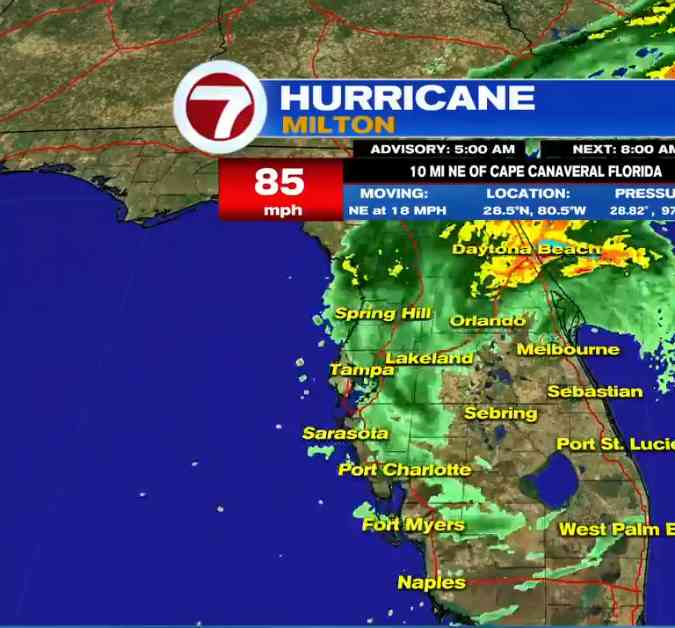Hurricane Milton made its way through Florida as a Category 3 storm, causing widespread power outages and flooding. The storm hit Siesta Key, south of Tampa, and continued to wreak havoc as it moved across the state. St. Petersburg recorded over 16 inches of rain, leading to flash flooding warnings in many areas.
The storm left more than 3.2 million homes and businesses without electricity, with reports of damage to structures like the Tropicana Field roof and multiple cranes. In St. Petersburg, a water main break cut off water service to residents, adding to the challenges faced by those affected by the storm.
Plant City experienced significant flooding, prompting emergency crews to rescue dozens of people. The city manager described the flooding as unprecedented, with 13.5 inches of rain falling in a short period. The storm also spawned tornadoes in southern Florida, causing further damage and destruction.
As Hurricane Milton made landfall and was downgraded to a Category 1 storm, officials worked to address the aftermath of the disaster. The storm hit an area still recovering from Hurricane Helene, complicating relief efforts and recovery. Mandatory evacuation orders were issued in 15 Florida counties, affecting millions of residents.
Governor Ron DeSantis highlighted the deployment of resources to assist with recovery efforts, including National Guard members, utility workers, and law enforcement. Gas stations faced shortages, leading to challenges for residents trying to evacuate. Authorities warned that those staying behind would need to be self-sufficient, as emergency responders would not be able to assist during the storm’s peak.
Despite the challenges faced by residents and communities, efforts were being made to address the aftermath of Hurricane Milton. The impact of the storm serves as a reminder of the importance of preparedness and resilience in the face of natural disasters. As Florida continues to recover, residents are urged to stay informed and take precautions to ensure their safety and well-being in future storms.


